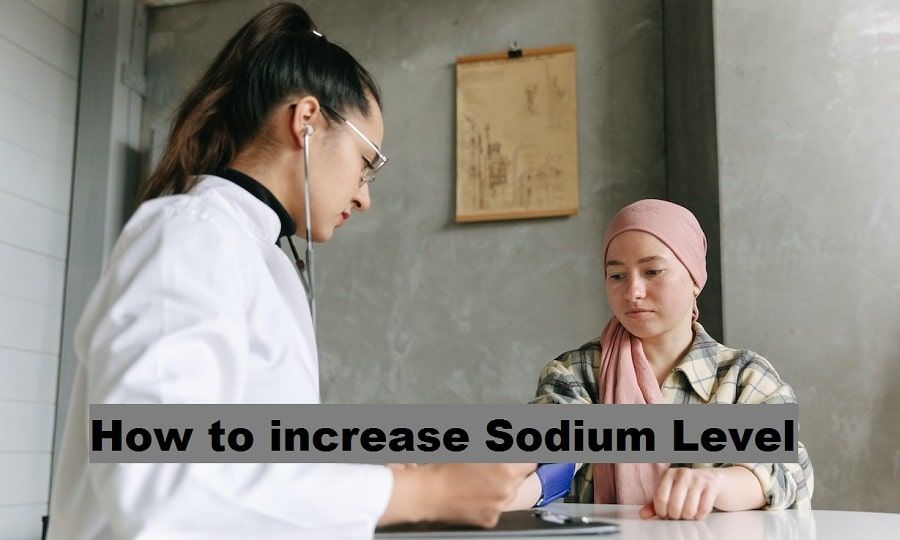Sodium is an essential mineral that is crucial for the proper functioning of the body. It directs pulse, keeps up with liquid equilibrium, and backs nerve and muscle capability. However, as we age, our body’s ability to regulate sodium levels decreases. Which can lead to low sodium levels or hyponatremia. Today’s post will discuss in detail what causes low sodium, its symptoms and how to increase sodium levels in the elderly naturally.
In our blood sodium, potassium, chloride, magnesium, calcium, phosphorus these mineral salts that maintain perfect balance in the body. Among these salts, sodium is the most important for the normal functioning of our nerves. Sodium depletion for any reason is an urgent medical condition. Therefore, if symptoms of sodium depletion occur, it is necessary to go to the nearest hospital immediately. And measures should be taken so that sodium does not decrease.
What Causes Low Sodium in elderly?
In older people, there are several common causes of low sodium levels. These include –
- Diuretics, urinary tract infections
- Chronic medical conditions such as kidney or liver disease.
- Dehydration
- Malnutrition
- Underactive thyroid or adrenal glands
- Lung cancer
- Decreased liver, heart or kidney function.
- Illnesses that can cause dehydration such as pneumonia.
Also Read – How to cure insomnia in 12 minutes
Identifying and treating the underlying cause of low sodium levels in the elderly is important, as this can prevent complications and improve overall health. If an older person is experiencing symptoms of low sodium, a healthcare professional should be consulted, as they can help diagnose and treat the underlying cause.
Symptoms of low sodium elderly
The main symptom of sodium depletion is cognitive impairment. Incoherent behavior, not recognizing others, random talk or excitement etc. When sodium levels in the blood become too low, it can cause a variety of symptoms, including:
- Nausea and vomiting.
- Confusion and confusion.
- Headache and dizziness.
- Fatigue and weakness.
- Convulsions.
- loss of appetite.
- Muscle cramps and spasms.
- Restlessness and agitation.
- The patient may become unconscious.
How to increase sodium levels in elderly naturally at home?
Low sodium and high blood pressure in the elderly cause serious problems. As we age, our body’s ability to regulate sodium levels decreases. Although medications are available to treat low sodium levels, there are also several natural ways to increase sodium levels in older adults.
Here are some tips for how do you raise your sodium level at home:
Increase salt intake
The easiest way to increase sodium levels is to eat more salt. Although excess salt intake can be harmful, older adults are often advised to increase their salt intake to maintain proper sodium levels. Salt can be added to food during cooking or at the table. However, it is important to consult a healthcare professional before increasing salt intake, as excessive salt intake can lead to high blood pressure and other health problems.
Consume foods rich in sodium
Besides salt, there are many foods that are naturally high in sodium. Some of these foods include canned soups, pickles, olives, cheese, cured meats, and processed foods. These foods can be included in an older person’s diet to increase sodium levels. List of foods rich in vitamin D. However, it’s important to read food labels and choose low-sodium options to avoid excessive salt intake. Consider the following foods to increase sodium levels in elderly naturally.
High sodium foods for elderly people:
- Canned soup
- Processed meats (eg, bacon, ham, sausage)
- Salted nuts and seeds
- Pickled foods (eg, pickles, olives)
- cheese
- Condiments (eg, ketchup, soy sauce, barbecue sauce)
- Frozen dinners and pre-packaged meals
- Egg-fried or fried egg items
- Saltine crackers and chips
- cottage cheese
It is important to note that these foods may be high in sodium, yet they should be eaten in moderation and other low-sodium options should be preferred in the diet. Consult with a health care professional or registered dietitian to determine the appropriate sodium intake for an older person and to develop a balanced diet plan that meets their specific needs.
Drink fluids
Dehydration is a common cause of low sodium levels, so drinking fluids can help raise sodium levels in the blood. Older people should aim to drink at least 8 glasses of water per day, and more if they experience symptoms of dehydration. However, it is important to consult a healthcare professional before increasing water intake, as excess water intake can lead to other health problems.
Avoid excessive sweating
Avoid excessive sweating to increase sodium levels naturally. Sweating can cause fluid loss and contribute to dehydration and low sodium levels. Elderly people should avoid excessive sweating by staying in cool environments, wearing loose clothing and avoiding strenuous physical activity in hot weather. Drink orsaline water if you go to places with extremely hot temperatures or work in the sun, if you sweat profusely.
Supplement with electrolytes
Electrolyte supplements, such as tablets or powders, may be helpful in increasing sodium levels. These supplements often contain a mixture of sodium, potassium, and other electrolytes, which can help restore electrolyte balance in the body. However, it is important to consult a healthcare professional before taking any supplement, as they may interact with medications or medical conditions.
Read more – 20 best breakfast weight loss
Hope you know how to increase sodium levels in elderly naturally. Maintaining proper sodium levels is important for the health and well-being of seniors. Natural ways to boost sodium levels at home include increasing salt intake, eating sodium-rich foods, drinking sports drinks or electrolyte solutions, eating more fruits and vegetables, drinking more water, and exercising regularly. However, it is important to consult a healthcare professional before making any significant changes to an older person’s diet or exercise routine.
